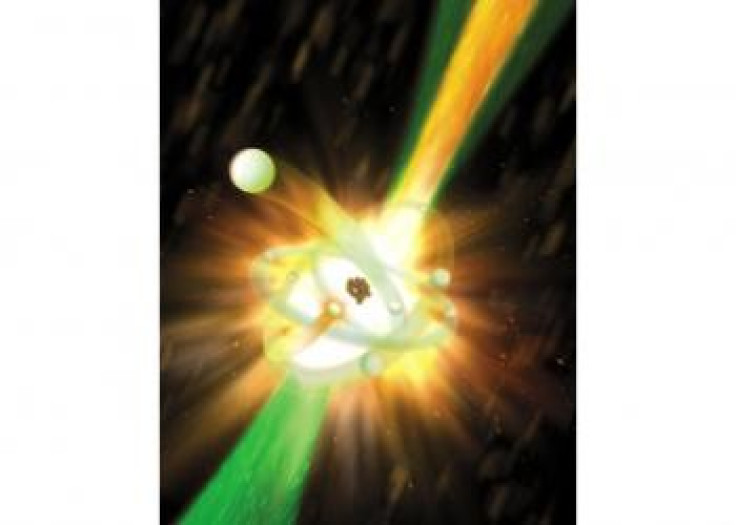World's First Atomic X-Ray Laser Created

Scientists from the U.S. Department of Energy's (DOE) SLAC National Accelerator Laboratory have created world's first atomic X-ray laser.
The scientists used Linac Coherent Light Source (LCLS) powerful X-ray laser to create the atomic laser.
They used LCLS X-ray laser to knock electrons out of the inner shells of many neon atoms in the capsule. When the electrons fell, one of the 50 atoms responded by emitting a photon in the X-ray range. This X-rays stimulated the neighbouring neon atoms to emit more X-rays, thereby creating a domino effect that amplified the laser light 200 million times which created the atomic laser.
"X-rays give us a penetrating view into the world of atoms and molecules," says Nina Rohringer, researchers from SLAC, who lead the team.
"We envision researchers using this new type of laser for all sorts of interesting things, such as teasing out the details of chemical reactions or watching biological molecules at work," she added.
"The shorter the pulses, the faster the changes we can capture. And the purer the light, the sharper the details we can see," she added
"This achievement opens the door for a new realm of X-ray capabilities," said John Bozek, instrument scientist at the LCLS. "Scientists will surely want new facilities to take advantage of this new type of laser."
The scientists now plan to create shorter-pulsed and higher-energy atomic X-ray lasers by using oxygen, nitrogen or sulfur gas.
© Copyright IBTimes 2024. All rights reserved.





